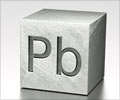Nigeria is dumping consumer paints with very high levels of lead on developing countries like India and China.
A multinational team of environmental and occupational health researchers has reported that Nigeria is dumping consumer paints with very high levels of lead on developing countries like India and China.
According to a University of Cincinnati study, researchers analysed lead levels in five colours of paint, from each of five brands, marketed and sold in Ibadan, a city of over two million people in south western Nigeria.Each paint sample was applied in a single layer to a wood block, left to dry and then removed and analysed in the university’s laboratories for lead content.
The researchers found that 96 percent of the consumer paints available in Nigeria contained higher than the recommended levels of lead. Bright-coloured paints—particularly yellow, red, and green contained the highest levels. Respectively, lead levels in yellow, red and green paint were 10, six and three times higher when compared with basic white paint.
According to Scott Clark, Professor of Environmental Health at the University of Cincinnati and Sandy Roda, a study co-author who oversaw sample analysis, one paint manufacturer in Nigeria sold high-lead paint in India, but offered a low-lead version in Singapore, a country that enforces a lead standard similar to the United States.
Researchers compared the Nigerian paint samples with those sold in some Asian countries, using data obtained by Clark and his collaborators in previous studies.
In the September 2006 issue of the journal Environmental Research, Clark reported that more than 75 percent of consumer paint tested from countries without lead-content controls—including India, Malaysia and China—had levels exceeding U.S. regulations. Collectively, these countries represent more than 2.5 billion people.
Advertisement
Researchers at the University of Cincinnati (UC) and University of Ibadan in Nigeria report these findings in an early Sept. 12 online edition of the journal Science of the Total Environment.
Advertisement
Source-ANI
LIN/C






